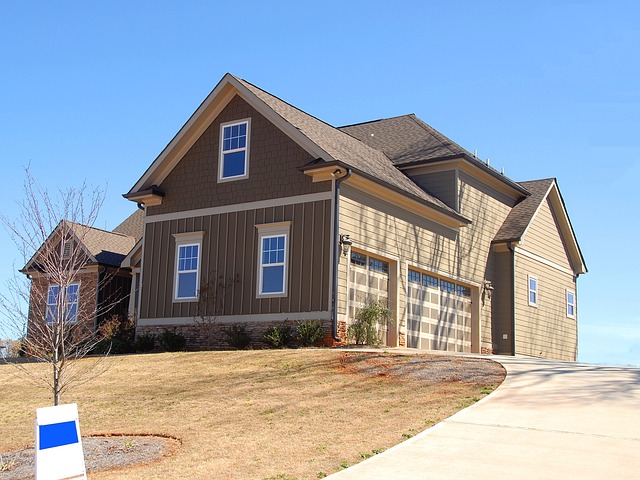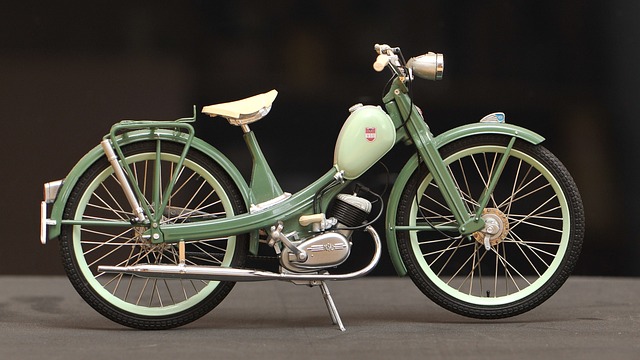Mopeds offer a cost-effective and eco-friendly transportation solution with an average fuel efficiency exceeding 100 miles per gallon, significantly outperforming larger vehicles on both economy and emissions. They come with lower initial purchase costs, reduced maintenance expenses, and typically lower insurance rates and registration fees compared to cars. Mopeds are classified as light vehicles, which means their registration is less expensive, and insurance policies for them are designed to be financially unobtrusive, often covering only third-party liability. Legal aspects of moped ownership vary by jurisdiction, so it's essential to research local regulations. Prospective buyers have a wide range of options from both dealerships and online marketplaces, with new and used mopeds for sale catering to diverse preferences and budgets, making them an accessible choice for those looking for a practical commuting vehicle without overspending.
Exploring the practicality of transportation, especially in cost-conscious times, often leads to the consideration of mopeds as a viable option. These compact vehicles offer a blend of affordability and efficiency, making them an attractive alternative to traditional automobiles. In this article, we delve into the low maintenance costs associated with mopeds for sale, providing a comprehensive guide from initial purchase to resale, ensuring you make informed decisions that align with your budget and lifestyle. From understanding their economic appeal to assessing the longevity of these machines, we cover all aspects of moped ownership, including maintenance essentials, fuel efficiency, insurance, and environmental impact. Join us as we navigate the practicalities of mopeds, revealing why they stand out as a cost-effective transportation solution.
Understanding Mopeds: The Economical Alternative to Traditional Vehicles

Mopeds present an attractive alternative to traditional vehicles, particularly for those conscious of their transportation budget. These compact and lightweight two-wheelers offer a cost-effective mode of commuting that is both fuel-efficient and low on maintenance requirements. The initial investment in mopeds for sale often pales in comparison to purchasing a car, and this saving is just the beginning. Mopeds typically consume less fuel per mile than cars, which translates to significant savings at the pump over time. Moreover, their simpler design means fewer components that can wear out or break, leading to lower maintenance costs. The durability of mopeds also contributes to their cost-effectiveness; many models are built to last, reducing the frequency of replacement and ensuring a dependable mode of transport without the burden of hefty upkeep expenses. This makes mopeds an economical choice for individuals and families looking to reduce transportation costs while still enjoying the freedom and convenience of personal mobility. In addition to their affordability, mopeds are often subject to different regulations than cars, which can include tax benefits and less stringent licensing requirements. For those in urban areas or with short daily commutes, a moped can be an ideal solution that combines efficiency, ease of use, and low maintenance costs, making it a smart economic choice for the modern consumer.
Assessing the Initial Investment: What to Expect When Buying Mopeds for Sale

When considering the purchase of a moped from the array of mopeds for sale, it’s crucial to carefully assess the initial investment required. Prospective buyers should evaluate both the direct and indirect costs associated with acquiring a new moped. The direct costs typically include the purchase price of the moped itself, any additional accessories desired, and registration fees. These can vary widely depending on the make, model, and condition of the moped, as well as regional regulations. It’s prudent to compare prices among various listings for mopeds for sale, ensuring that the chosen moped aligns with your budget while still meeting your transportation needs.
Indirect costs, such as insurance and ongoing maintenance, should also be factored into the initial investment calculation. Insurance premiums can differ significantly based on factors like age, driving history, and local laws. Maintenance costs for mopeds tend to be lower than those for cars due to their simplicity and smaller size; however, it’s wise to set aside funds for regular servicing, such as oil changes, tire rotations, and occasional part replacements. By thoroughly considering these various costs when exploring the plethora of mopeds for sale, buyers can make an informed decision that balances their financial constraints with the reliability and performance they seek from their new mode of transportation.
The Longevity of Mopeds: How Long Can You Ride Before Maintenance Becomes Necessary?

Mopeds are an economical and eco-friendly mode of transportation that offer a cost-effective alternative to cars and trucks. Their low maintenance costs and fuel efficiency make them particularly attractive to individuals looking for affordable commuting options. The longevity of mopeds is one of their most compelling advantages, with many models capable of enduring tens of thousands of miles before significant repairs are necessary. This durability translates into a higher resale value compared to other vehicles, making second-hand mopeds for sale a smart investment. Regular maintenance, such as oil changes and tire rotations, is minimal, often requiring attention only every few thousand miles. However, to extend the life of your moped and maintain its performance and reliability, it’s important to stay on top of routine checks like brake pad inspection, battery charging levels, and chain lubrication. While the initial investment in a well-maintained used moped might be lower than purchasing new, the ongoing costs are substantially less than owning a car, making them a practical choice for riders who prioritize cost savings without sacrificing mobility. In regions with favorable weather conditions and well-defined bike lanes, mopeds can serve as a primary mode of transportation for years before significant maintenance becomes necessary, offering a sustainable and budget-friendly travel option.
Maintenance Essentials: Keeping Your Moped Running Smoothly on a Budget

Opting for a moped is a practical choice for those seeking an affordable and efficient mode of transportation with low maintenance costs. To keep your moped running smoothly on a budget, it’s crucial to perform routine checks and minor upkeep tasks regularly. Start by ensuring the engine oil is at the proper level and type for your model, as this is the lifeblood of your moped’s performance. Checking the tire pressure and tread can prevent unnecessary wear and tear, prolonging the life of your tires and improving fuel efficiency.
For those considering purchasing a moped or are current owners looking to minimize expenses, it’s wise to invest in some basic tools for at-home maintenance. A simple toolkit can include essentials like an adjustable wrench, screwdrivers, a tire pressure gauge, and a motor oil syringe. With these, you can address many issues that arise, such as tightening loose bolts or adding oil between professional services. Additionally, scouting for mopeds for sale that are well-maintained or have a good service history can further reduce your long-term costs. By being proactive with your moped’s care and staying informed about the best practices for budget-friendly maintenance, you can enjoy a reliable and cost-effective transportation option for years to come.
Fuel Efficiency: Why Mopeds Are a Cost-Effective Transportation Option

Mopeds emerge as a cost-effective transportation alternative, particularly for those seeking to navigate urban environments with minimal financial outlay. Their fuel efficiency is unparalleled among motorized vehicles, offering an average of 100 miles per gallon or more. This translates to significantly lower fuel costs compared to larger vehicles like cars and trucks. The initial investment in mopeds for sale is often less than that of a car, and because they consume less fuel, the ongoing expenses are substantially reduced. Moreover, mopeds are designed to be lightweight and compact, allowing them to achieve higher miles per gallon due to their smaller engines and lower energy requirements. This not only saves money but also contributes to a reduced carbon footprint, making mopeds an environmentally friendly option. Additionally, mopeds require less maintenance than larger vehicles, with lower insurance premiums, registration fees, and overall operational costs. As a result, owning a moped can be a smart financial decision for those looking to commute without breaking the bank. When considering the purchase of a moped, it’s wise to explore the diverse models available on the market, each offering different features to suit various needs and budgets. Mopeds for sale can be found through local dealerships or online platforms, providing consumers with an array of choices to select from based on their individual preferences and requirements.
Insurance and Registration: Navigating the Legal Requirements with Minimal Financial Impact

When considering transportation options that come with low maintenance costs, mopeds for sale often present an attractive alternative to both cars and motorcycles. A significant aspect of owning a moped is understanding the legal requirements associated with registration and insurance, which can be navigated with minimal financial impact. In many regions, mopeds are categorized as light vehicles, which typically means lower registration fees compared to their automotive counterparts. This classification also extends to insurance policies, where premiums are often more affordable due to the reduced risk profile associated with mopeds. Prospective owners should research local regulations as these can vary significantly by jurisdiction. The process of registering a moped involves paying a fee that reflects the vehicle’s value and weight, which is inherently less for mopeds. Similarly, insurance requirements are designed to be cost-effective, with policies that cover third-party liability being the norm. By choosing a moped, consumers can enjoy the convenience of personal transportation while keeping their financial outlay for legal compliance to a minimum. It’s advisable to shop around for both registration and insurance services, as competitive pricing and flexible plans are available for mopeds, ensuring that the costs remain low throughout the vehicle’s lifecycle.
Resale Value: How to Maximize the Return on Your Moped Investment

When considering the resale value of your moped, strategic choices can significantly enhance your return on investment. Opting for a popular model among mopeds for sale often means there’s a consistent demand, which can translate to a better price when you decide to part ways with your vehicle. To maximize your moped’s resale value, prioritize maintenance and upkeep diligently. Regular servicing not only ensures the moped operates efficiently but also preserves its condition, making it more attractive to potential buyers. Additionally, keeping records of all maintenance work, repairs, and service history can provide reassurance to future owners that the moped has been well-cared-for. This documentation can be a decisive factor for buyers who are cautious about pre-owned mopeds.
Another key factor in maintaining high resale value is selecting a moped that retains its popularity over time. Models from reputable brands that have established themselves in the market as reliable and efficient tend to hold their value well. Furthermore, choosing a moped with timeless styling or one that has been updated with modern features can keep it in demand among buyers seeking mopeds for sale. By focusing on these aspects, you can ensure that your moped not only serves you well during your ownership but also represents a sound investment when the time comes to sell.
Environmental Considerations: The Eco-Friendly Nature of Mopeds as a Cost-Saving Measure

Mopeds present a compelling option for those seeking environmentally friendly transportation with low maintenance costs, representing an economical and eco-conscious choice in personal mobility. The intrinsic efficiency of mopeds translates to minimal fuel consumption, which not only saves wallets but also significantly reduces carbon footprints. As a result, mopeds for sale are increasingly attractive to environmentally aware consumers who prioritize sustainability without compromising on affordability. The environmental benefits extend beyond individual use; when integrated into urban planning, mopeds can contribute to cleaner city air and less congestion, making them a valuable asset in reducing the overall environmental impact of daily commutes. Furthermore, the maintenance requirements for mopeds are generally lower than those for cars, with simpler engineering that necessitates fewer complex parts, which typically need repair or replacement less often. This translates to reduced long-term costs and makes owning a moped an even more cost-effective solution over time. The availability of new and used mopeds for sale across various markets underscores the growing appeal of these vehicles as a practical alternative to conventional cars, offering both economic and environmental advantages.
